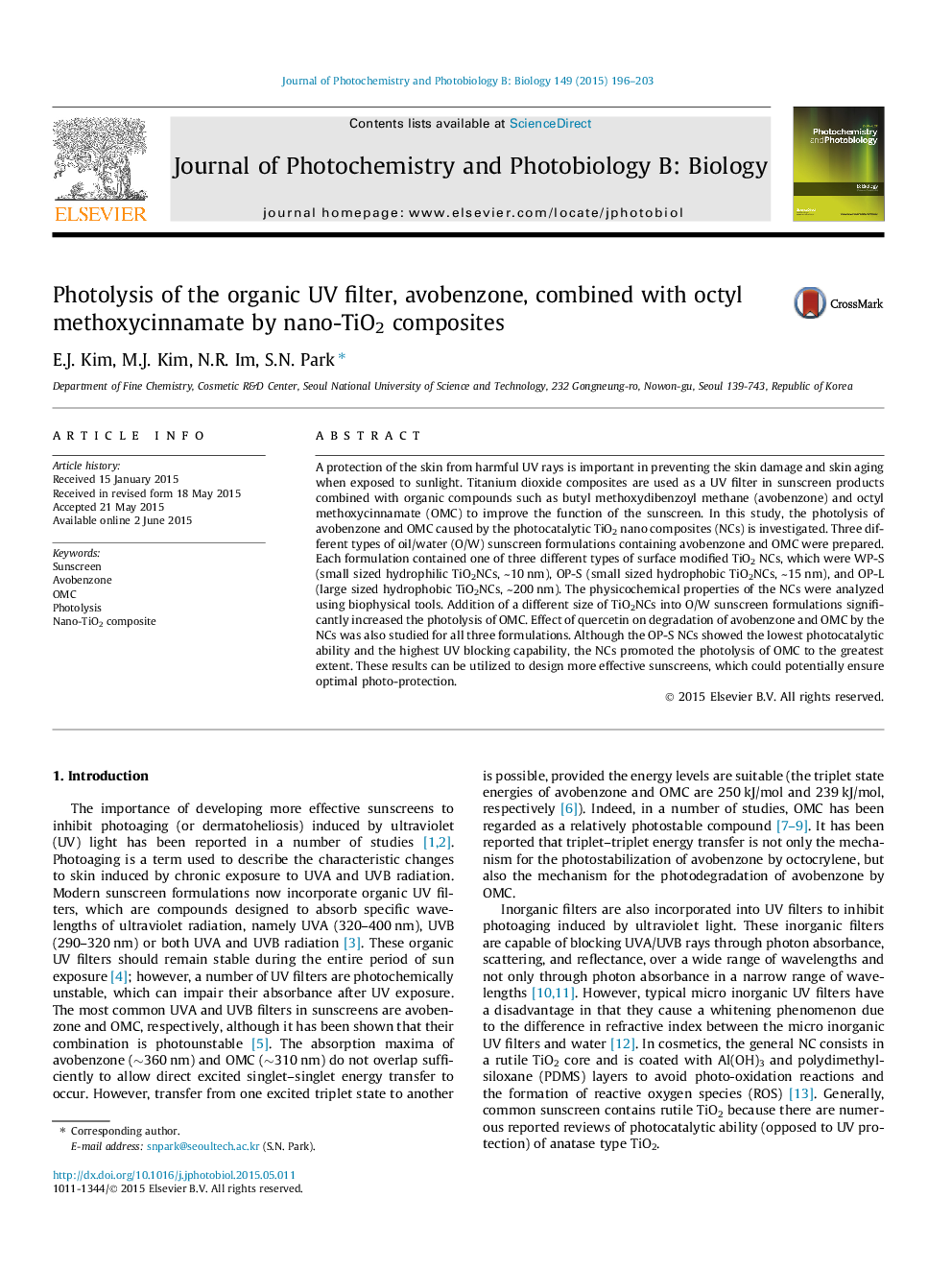| Article ID | Journal | Published Year | Pages | File Type |
|---|---|---|---|---|
| 6493802 | Journal of Photochemistry and Photobiology B: Biology | 2015 | 8 Pages |
Abstract
A protection of the skin from harmful UV rays is important in preventing the skin damage and skin aging when exposed to sunlight. Titanium dioxide composites are used as a UV filter in sunscreen products combined with organic compounds such as butyl methoxydibenzoyl methane (avobenzone) and octyl methoxycinnamate (OMC) to improve the function of the sunscreen. In this study, the photolysis of avobenzone and OMC caused by the photocatalytic TiO2 nano composites (NCs) is investigated. Three different types of oil/water (O/W) sunscreen formulations containing avobenzone and OMC were prepared. Each formulation contained one of three different types of surface modified TiO2 NCs, which were WP-S (small sized hydrophilic TiO2NCs, ~10Â nm), OP-S (small sized hydrophobic TiO2NCs, ~15Â nm), and OP-L (large sized hydrophobic TiO2NCs, ~200Â nm). The physicochemical properties of the NCs were analyzed using biophysical tools. Addition of a different size of TiO2NCs into O/W sunscreen formulations significantly increased the photolysis of OMC. Effect of quercetin on degradation of avobenzone and OMC by the NCs was also studied for all three formulations. Although the OP-S NCs showed the lowest photocatalytic ability and the highest UV blocking capability, the NCs promoted the photolysis of OMC to the greatest extent. These results can be utilized to design more effective sunscreens, which could potentially ensure optimal photo-protection.
Keywords
Related Topics
Physical Sciences and Engineering
Chemical Engineering
Bioengineering
Authors
E.J. Kim, M.J. Kim, N.R. Im, S.N. Park,
